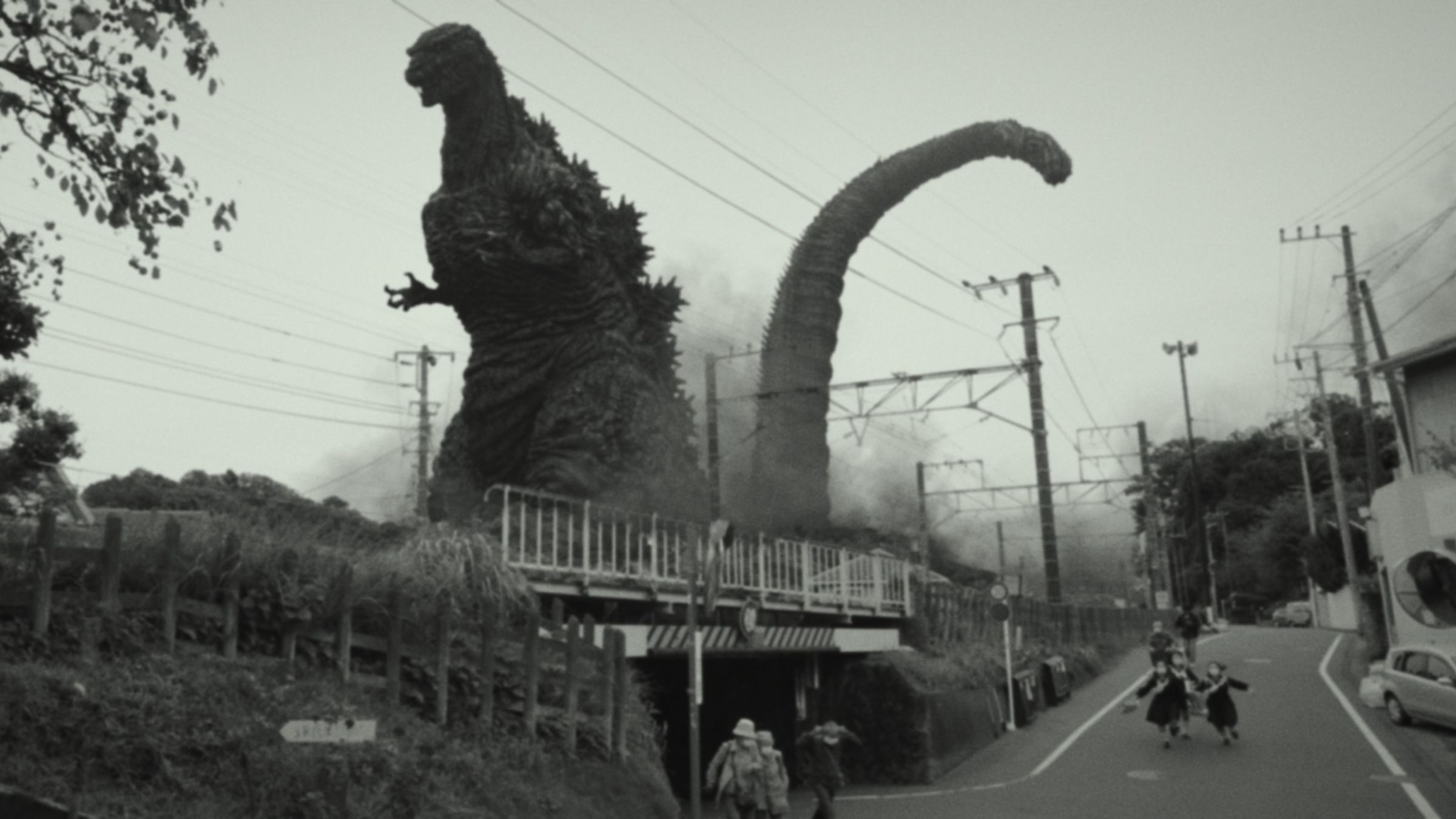
I’ve been noticing quite an exciting turn of events regarding “Shin Godzilla”. As many fans would agree, its recent re-release in North American cinemas has been nothing short of successful. Interestingly enough, this isn’t a new story for the movie, as it was initially screened back in 2016, marking a significant return of live-action Godzilla films from Japan after a twelve-year hiatus. In its initial North American run in 2016, “Shin Godzilla” managed to collect $1.9 million. However, the recent re-release in August 2025 has shown an impressive improvement, earning $2.4 million in just four days, a significant leap from its original opening numbers. GKIDS plans to further enhance the film’s box office presence by re-releasing it in a different format. They have announced “Shin Godzilla: ORTHOchromatic”, a black and white version of the film, a fresh take on the classic monster tale.
The black-and-white version of “Shin Godzilla,” titled “ORTHOchromatic,” resembles the remastered, monochrome rendition of the Academy Award-winning Godzilla film, “Godzilla Minus One Minus Color.” These grayscale adaptations of contemporary Godzilla movies are designed to mimic the same mood and ambiance as the original 1954 Godzilla film, which was also filmed in black and white. By eliminating color, these remastered versions accentuate various aspects of the films that were previously overlooked. GKIDS recently released the colored version of “Shin Godzilla” in early August to coincide with the upcoming 4K Disc release of the film. The black-and-white adaptation, “Shin Godzilla: ORTHOchromatic,” will be available in the US and Canada starting on August 31st.
What to Know About Shin Godzilla: ORTHOchromatic
Hideaki Anno, one of the creators of Neon Genesis Evangelion, teamed up with Shinji Higuchi to co-direct Shin Godzilla. Anno’s intricate storytelling resonated strongly with fans through the Evangelion series. In Shin Godzilla, Anno and Higuchi crafted a movie that tackled bureaucratic inefficiency, serving as a reflection of the Japanese government’s handling of crises during the early 2010s, particularly the 2011 Fukushima nuclear disaster. In this film, Godzilla is a creature that adapts to its surroundings by evolving, undergoing several transformations throughout the movie. Initially appearing as a struggling sea monster struggling to maintain an upright position, Godzilla eventually morphs into the terrifying form of the Godzilla monster we’ve all come to recognize.
In simpler terms, due to the red tape within the Japanese government, there was a delay in addressing Godzilla, enabling him to grow stronger and eventually destroy Tokyo. The movie “Shin Godzilla” was well-received globally but particularly struck a chord with Japanese viewers who could relate to grappling with the consequences of slow government response. Despite “Shin Godzilla’s” success in Japan, it took until 2023 for another Japanese Godzilla film, titled “Godzilla Minus One,” to be produced, which went on to become the highest-earning Godzilla movie worldwide.
Despite initial discussions for a sequel to “Shin Godzilla” appearing to hit a snag, Toho has recently hinted at the possibility of creating a follow-up, spurred by the immense success of “Minus One.” On the other hand, a sequel for “Godzilla Minus One” is already in the works, with original director Takashi Yamazaki set to direct once more. While “Shin Godzilla” served as a critique of contemporary Japanese politics, “Godzilla Minus One” explored post-war Japan and its themes revolved around survivor’s guilt and humanity’s resilience in the face of adversity.
https://comicbook.com/anime/news/godzilla-modern-era-shin-vs-minus-one-producer/embed/#
Read More
- The Most Jaw-Dropping Pop Culture Moments of 2025 Revealed
- Ashes of Creation Rogue Guide for Beginners
- ARC Raiders – All NEW Quest Locations & How to Complete Them in Cold Snap
- Best Controller Settings for ARC Raiders
- Where Winds Meet: How To Defeat Shadow Puppeteer (Boss Guide)
- Ashes of Creation Mage Guide for Beginners
- Where Winds Meet: Best Weapon Combinations
- Hazbin Hotel season 3 release date speculation and latest news
- My Hero Academia Reveals Aftermath Of Final Battle & Deku’s New Look
- Mike Flanagan’s Most Overlooked Horror Villain Hits Even Harder on a Rewatch
2025-08-21 02:40